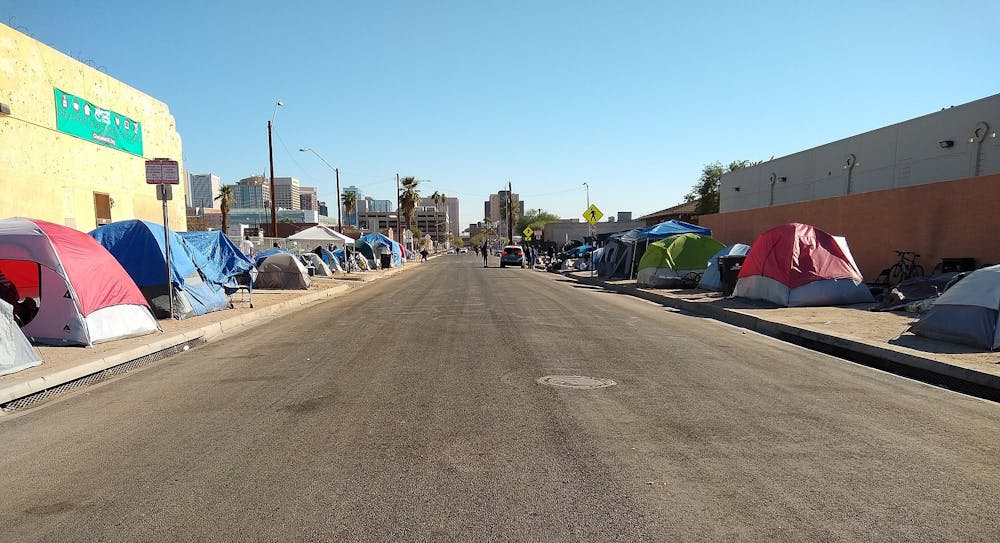Phoenix community leaders and organizations are making efforts to provide solutions to Arizona’s housing crisis.
Phoenix city officials and residents have been working together to improve safety around local businesses and residential areas, and to take care of the individuals who are homeless.
Together, government leaders and residents are working on initiatives such as improving street lighting and security around these areas, as well as working with outreach organizations.
As the fifth largest city in the country, Phoenix is thriving with growing businesses and arts and culture. However, the Phoenix community, especially downtown, suffers from issues such as poverty and homelessness.
According to the Maricopa Association of Governments, this year there were 4,900 unhoused people and 4,700 sheltered people, a much higher number than in previous years.
A lack of housing and resources for these communities can contribute to other problems such as higher rates of crime and drug use in the community.
Ali Nervis, a member of the Central City Village Planning Committee, said that in order to make progress to solve the issue of a lack of affordable housing in Arizona, residents and local community organizations need to hold government leaders accountable.
“Some people and power and certain institutions are looking to take advantage or exploit vulnerable populations.” Nervis said. “So we have to use our voice, to stand in opposition, both as a committee and as an individual.”
There tend to be larger homeless populations in communities which also have a higher population of people of color. These areas also often have larger rates of alcohol and substance use.
The considerable percentage of people who are homeless in the Central City area contributes to issues for locals who may have feelings of insecurity, both real and perceived, as well as an increase of crime and drug rates.
Nervis laid out her desire.
“We hope the government will start to have more of a people first approach, and look at how people are being impacted by laws, rather than focusing on the profit as the bottom line,” Nervis said.
Community leaders are looking at ways to provide solutions for housing for unhoused populations alike.
Brennan Ray, a Phoenix-based real estate attorney, said governments have been able to make progress to improve living conditions of individuals who are homeless.
“I’ve had a good conversation with members of the community about issues surrounding security and issues with the homeless community,” Ray said. “We are working with the city and residents to make sure that we use both the resources to keep the community safe.”
Organizations, like Phoenix Cares, work with individuals who are homeless to provide shelter and to keep them off of the streets, however, these programs are often both underutilized and underpromoted to businesses.
Many Phoenix community organizations are making an effort to provide resources for people of color in Central City, who are statistically more susceptible to poverty, homelessness and substance abuse, as a preventative measure.
One such organization is the Central City Village Planning Committee, an organization that focuses on improving and innovating businesses, communities and infrastructure.
The Central City Village Planning Committee meets once a month to discuss and vote on a variety of community issues, including street planning, local business, and residential planning. The main goal of the committee is to make Central City a thriving center for local businesses while also looking out for the safety and well-being of the residents.
“A while back I attempted to organize an Equity Committee,” said Eva Olivas, a member of the Central City Village Planning Committee,. “They met a few times but one of the complications of that committee was that we were very unclear on our definition of equity, so that is something we are figuring out.”
Local leaders of the Central City Village Planning Committee emphasize the importance of ordinary citizens in finding solutions to Arizona’s housing crisis and homelessness issue.
Janey Pearl Starks, another member, said it’s up to citizens to get involved.
“It takes folks really coming to these meetings, asking questions, expressing support or not,” Starks said. “That gets the committee members thinking a little bit more about how they're gonna vote."

